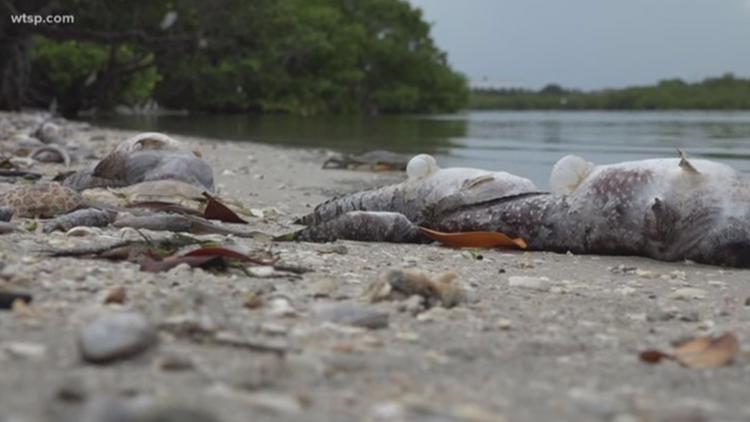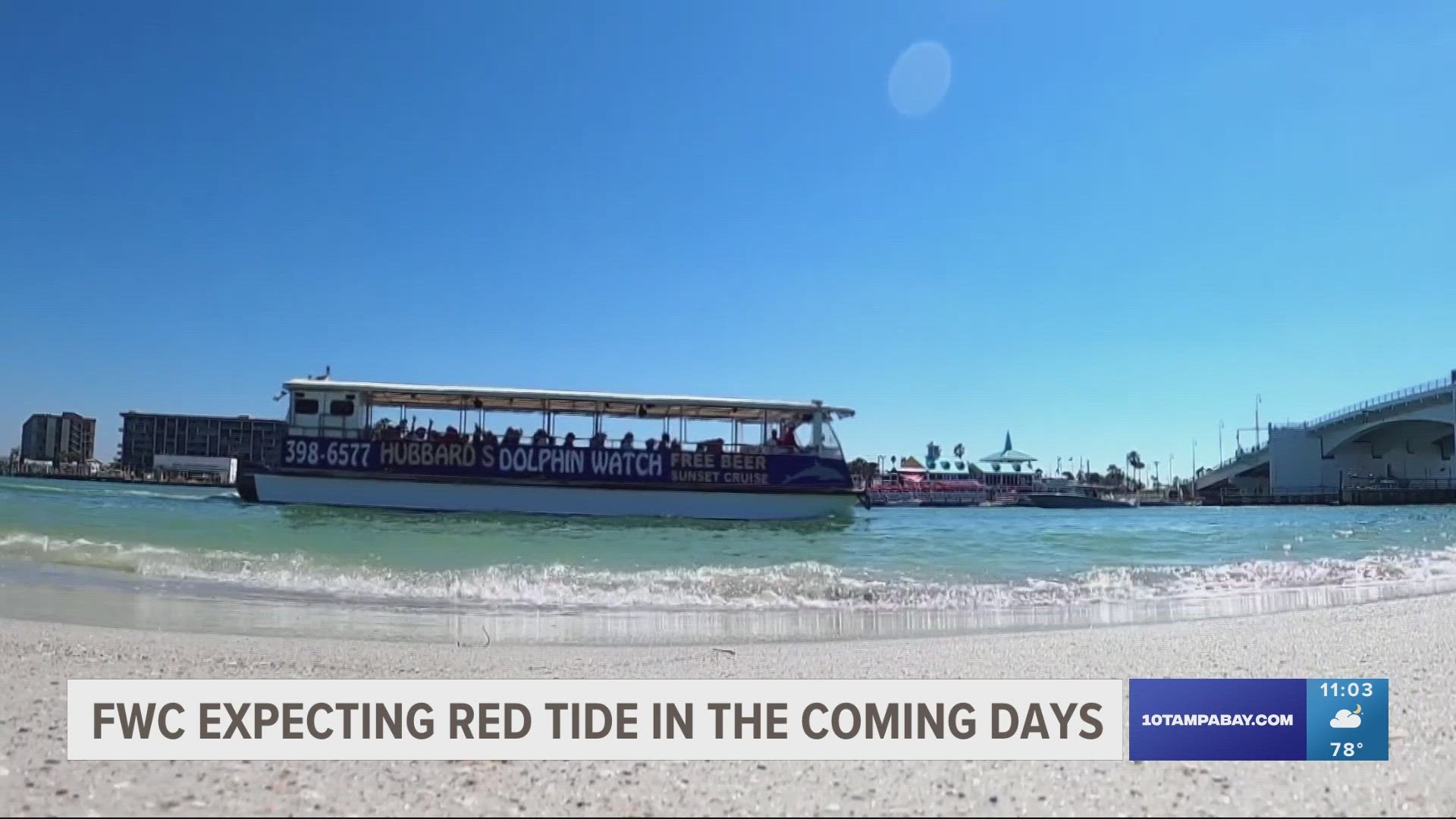PINELLAS COUNTY, Fla. — Red tide is keeping its grasp on Florida's Gulf Coast, according to the Florida Fish and Wild Life Conservation Commission's latest update on the harmful algae bloom.
Experts say a "patchy bloom" is behind the red tide organism, Karenia brevis, being detected in 81 samples.
Background to high concentrations of red tide was found in and offshore Pinellas County and Sarasota County. With background concentrations being detected in Hillsborough and Hernando counties
Manatee County and Pasco County were reported to have background to medium concentrations of red tide detected.
RELATED: Red tide limits fishing in Tampa Bay
As for fish kills linked to red tide, they're still being reported in several counties Pinellas, Manatee and Sarasota.
To report a fish kill to the Florida Fish and Wildlife Conservation Commission (FWC), call the hotline at 800-636-0511. For more resources, click here.
According to the National Oceanic and Atmospheric Administration, "red tide" is a harmful algal bloom or HAB, that is created when plants in the sea grow out of control and cause harmful toxins. Those toxins can have negative impacts on people, marine mammals, birds, fish and shellfish.
In Florida and the Gulf of Mexico, the species responsible for most red tides is called Karenia brevis, and is often abbreviated as K. brevis.
NOAA scientists say that although it's rare, red tide can cause human illness and in some rare cases be deadly.
Experts at Florida Fish and Wildlife Conservation Commission say the toxic chemicals that come from red tide affect both marine organisms and humans.
Karenia brevis produces brevetoxins that can affect the central nervous system of fish and other vertebrates, which causes these animals to die.
For daily red tide updates, check the FWC's red tide sampling map.



